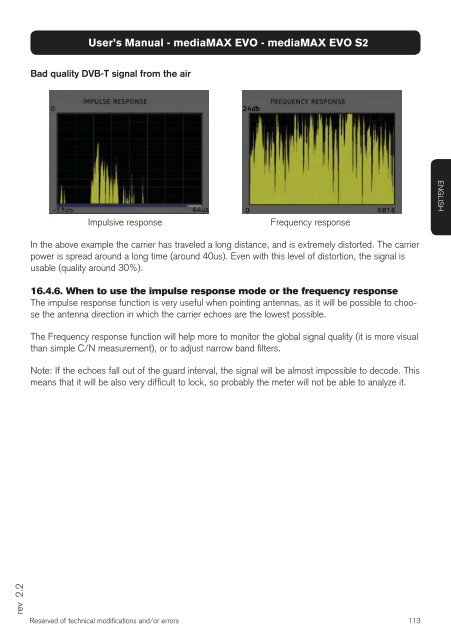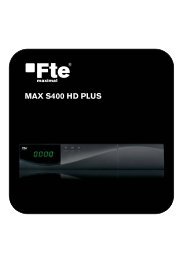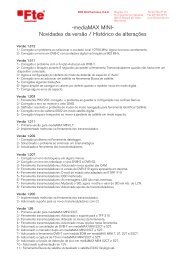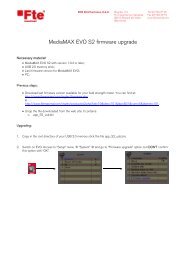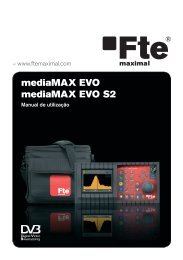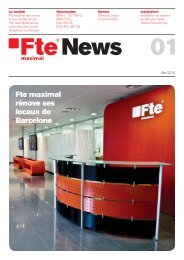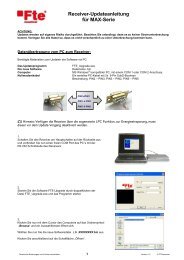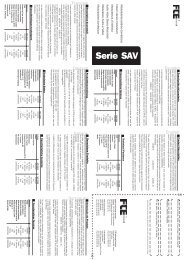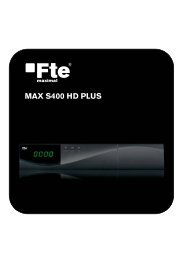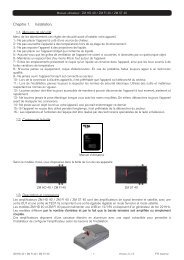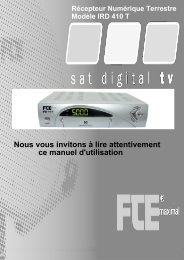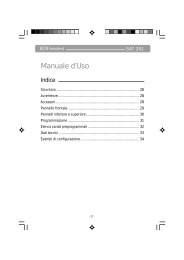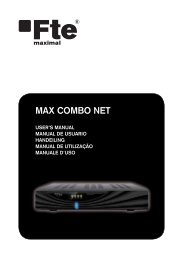mediaMAX EVO mediaMAX EVO S2 - FTE Maximal
mediaMAX EVO mediaMAX EVO S2 - FTE Maximal
mediaMAX EVO mediaMAX EVO S2 - FTE Maximal
Create successful ePaper yourself
Turn your PDF publications into a flip-book with our unique Google optimized e-Paper software.
ev 2.2<br />
User’s Manual - <strong>mediaMAX</strong> <strong>EVO</strong> - <strong>mediaMAX</strong> <strong>EVO</strong> <strong>S2</strong><br />
Bad quality DVB-T signal from the air<br />
Impulsive response Frequency response<br />
In the above example the carrier has traveled a long distance, and is extremely distorted. The carrier<br />
power is spread around a long time (around 40us). Even with this level of distortion, the signal is<br />
usable (quality around 30%).<br />
16.4.6. When to use the impulse response mode or the frequency response<br />
The impulse response function is very useful when pointing antennas, as it will be possible to choose<br />
the antenna direction in which the carrier echoes are the lowest possible.<br />
The Frequency response function will help more to monitor the global signal quality (it is more visual<br />
than simple C/N measurement), or to adjust narrow band fi lters.<br />
Note: If the echoes fall out of the guard interval, the signal will be almost impossible to decode. This<br />
means that it will be also very diffi cult to lock, so probably the meter will not be able to analyze it.<br />
Reserved of technical modifi cations and/or errors<br />
113<br />
ENGLISH


